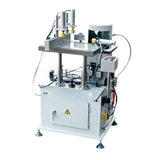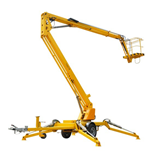Australia might be panicking about the financial shocks being felt around the globe but, according to leading industry analyst and economic forecaster, BIS Shrapnel, it is the structural change to the Australian economy being caused by the resources boom, and the strength of the Australian dollar that are the real concerns.
BIS Shrapnel’s Long Term Forecasts 2011 – 2026 report focuses on medium-term issues, and says that local trade-exposed manufacturing and services are contracting as they make way for growth in the mining industry, but what Australia really needs is an infrastructure investment-led productivity drive to bring balance to the economy.
"The current financial market ructions are serving as a distraction from something much more important: the impact of the resources boom on the rest of the Australian economy," BIS Shrapnel’s Chief Economist, Dr Frank Gelber, said.
According to Dr Gelber, the strength of the dollar is underpinning this ongoing process of structural change in the Australian economy. It’s the high Australian dollar that is affecting the competitiveness of trade-exposed industries, in export markets and when competing locally with imports.
He said manufacturing, secondary processing, agriculture, inbound and outbound tourism, education services and other trade-exposed services have been badly affected.
"The new taxes won’t hurt the economy - a mining tax will do little to discourage investment in this buoyant period, and the carbon tax is a bit player," Dr Gelber said.
"It's the strength of the dollar that is doing the damage to domestically produced tradable goods and services."
Significant job losses in export steel and Qantas are just the most recent outcomes – Dr Gelber said – albeit larger and more highly visible, resulting from activities being shifted offshore.
There has been an escalation of such activities for several years now, as well as weakness in inbound and local tourism and services, partially due to the GFC-induced downturn in the Australian economy, but mainly due to the dollar.
"It's not as though this is a new phenomenon," Dr Gelber said.
"We've been losing bits of industry for the last 30 years; every time the dollar goes too high."
The contraction of trade-exposed industries will continue as long as the Australian dollar remains high. Dr Gelber warns that we should never underestimate the importance of the currency in determining where things are produced.
"We think the Australian dollar needs to be valued at around USD 75-80 cents to underwrite a competitive domestic tradeables sector," he said.
Dr Gelber says there's not much Australia can do about the strength of the dollar.
"It is a free floating dollar in a free enterprise economy," he said.
"The RBA knows it can't successfully intervene, so we are stuck with the high dollar, at least while commodity prices remain so high."
BIS Shrapnel says while the minerals boom won’t last forever, structural change is a medium-term, often irreversible, process. The change leaves Australia vulnerable once the stimulus of minerals investment as the driver of growth, and high commodity prices to boost the trade balance, has ended.
"We need to prepare the economy for the end of the boom," Dr Gelber said.
"We can't expect any significant protection or government intervention in the operation of the market.
"It’s all very well to point to the need for productivity, but it’s not that easy. People have been decrying the weakness of productivity growth this decade. They talk about it as if it comes automatically. It doesn't. We have to earn it."
In the 1990s, according to BIS Shrapnel, it came through changes in work practices as Australians worked smarter and, incidentally, harder.
"I'm not sure there's a lot of room to work harder now," Dr Gelber said.
Future growth could come through productivity-enhancing investment, both public and private. But, according to Dr Gelber, the public sector is just catching up from underinvestment in the 1990s and the first part of the last decade. Investment by the private sector is still weak with companies trying to save their cash post GFC.
"The current overseas malaise should be a lesson to us," he said.
"The market works on short term logic, but we need to live with the long term consequences.
"We need to put our minds to doing the things that will soften the blow when the minerals boom ends. Now. While we still can. Rather than just blowing the dough. Hence the importance of a resources tax to prepare the economy for the end of the boom."
Dr Gelber said, for example, that state and federal governments should undertake infrastructure projects which will make Australian industry more efficient and cost-effective.
The national broadband network is one such project but there are other projects that could reduce the cost of doing business in Australia.
"While the resources boom continues and the dollar stays high, investment in infrastructure will serve as a rearguard action against loss of industry. But, equally importantly, it will serve as the underpinning of growth once the minerals boom ends," he said.















